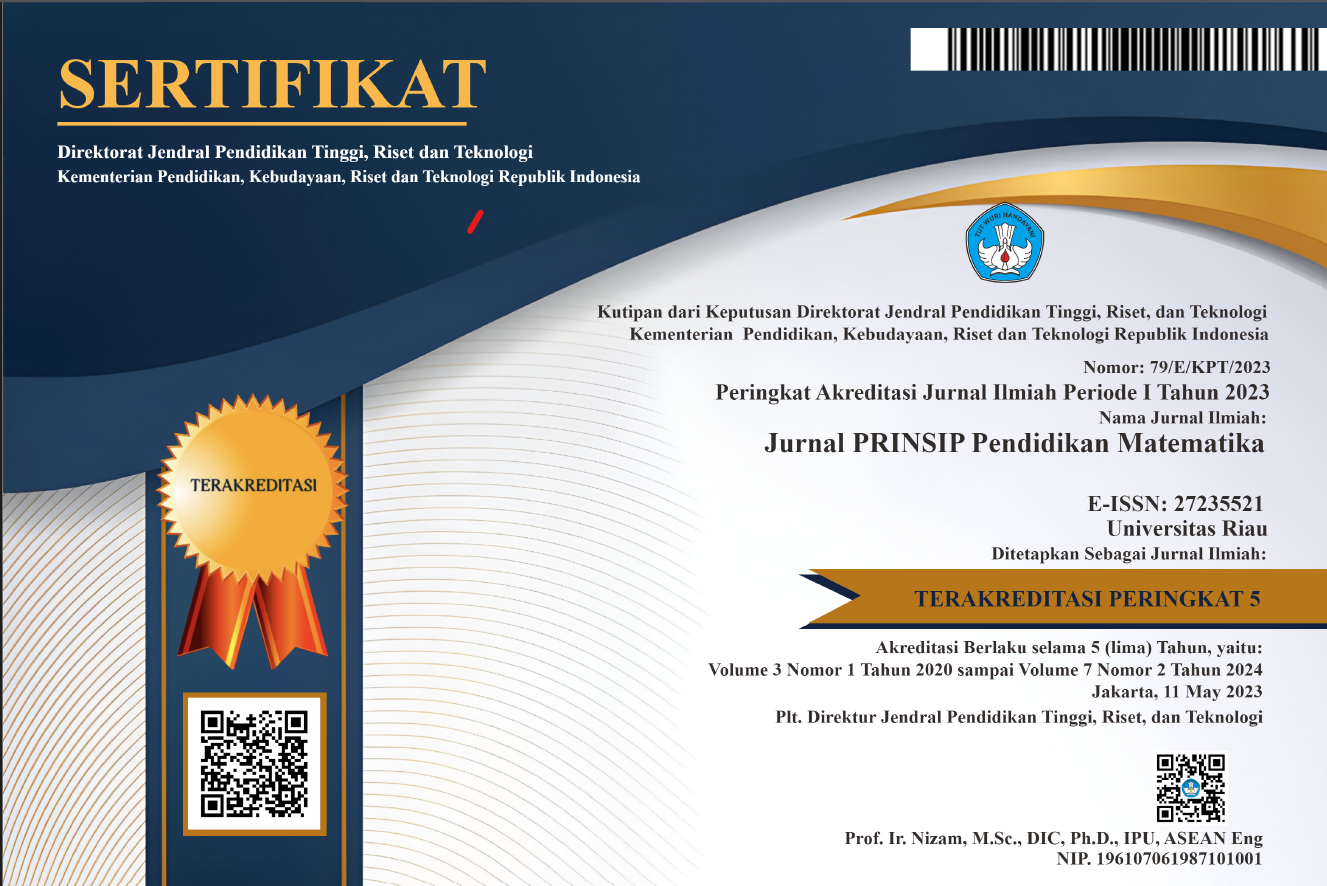ANALYSIS OF ERROR IN SOLVING PROBLEMS PISA CONTENT CHANGE AND RELATIONSHIP ON STUDENTS OF CLASS VIII MTs DARUL IMAN PALU USING NOLTING THEORY
Abstract
This qualitative research describes the types of errors made by class VIII students of MTs Darul Iman Palu in solving PISA problems with Change and Relationship content using the Nolting theory. Data were collected by test and interview methods. The research subjects consisted of two students, each having high and medium abilities. The results showed that (1) the types of errors made by high-ability students in solving PISA questions of Change and Relationship content based on Nolting's theory were misread-direction errors (errors in reading instructions). (2) The types of errors made by moderately capable students in solving PISA questions of Change and Relationship content based on Nolting's theory are misread-direction errors (errors in reading instructions) and concept errors (concept errors).
Downloads
References
Dewantara, A. H. (2018). Soal matematika model PISA: Alternatif materi program pengayaan. DIDAKTIKA : Jurnal Kependidikan, 12(2), 197–213. https://doi.org/10.30863/didaktika.v12i2.186
Fazzilah, E., Effendi, K. N. S., & Marlina, R. (2020). Analisis kesalahan siswa dalam menyelesaikan soal PISA konten Uncertentainty and Data. Jurnal Cendekia: Jurnal Pendidikan Matematika, 4(2), 1034–1043. https://doi.org/https://doi.org/10.31004/cendekia.v4i2.306
Hawa, A. M., & Putra, L. V. (2018). PISA untuk siswa Indonesia. JANACITTA Journal of Primary and Children’s Education, 1(1), 1–8. https://doi.org/10.35473/jnctt.v1i1.13
Napfiah, S., & Sulistyorini, Y. (2021). Errors Analysis in understanding transformation geometry through concept mapping. International Journal of Research in Education (IJRE), 1(1), 6–15. https://doi.org/https://doi.org/10.26877/ijre.v1i1.5863
Nolting, P. D. (2012). Math study skills workbook : Your guide to reducing text anxiety and improving study strategies. Houghton Mifflin College Div.
OECD. (2019). Programme for International Student Assessment (PISA) results from PISA 2018. https://www.oecd.org/pisa/publications/PISA2018_CN_IDN.pdf
Prasetyo, D. A. B., & Rudhito, M. A. (2016). Analisis kemampuan dan kesulitan siswa SMP dalam menyelesaikan soal geometri model TIMSS. Jurnal Pengajaran MIPA, 21(2), 122–128.
Siregar, H. M. (2019). Analisis kesalahan siswa dalam menyelesaikan soal tes kemampuan berpikir kreatif matematis materi Lingkaran. AKSIOMA: Jurnal Program Studi Pendidikan Matematika, 8(3), 497–507. https://doi.org/10.24127/ajpm.v8i3.2379
Solfitri, T., Kartini, Siregar, H. M., & Syari, R. (2019). The Analysis of students’ errors in using Integration Techniques. Proceeding of the SS9 & 3rd URICES, 2019, Pekanbaru, Indonesia, 328–335.
Suherman, E. (2011). Strategi pembelajaran matematika kontemporer. PT Remaja Rosdakarya. http://dx.doi.org/10.1016/j.proeng.2015.12.621
Wati, M. K., & Sujadi, A. A. (2017). Analisis kesalahan dalam menyelesaikan masalah matematika dengan menggunakan Langkah Polya siswa kelas VII SMP. Jurnal PRISMA Universitas Suryakancana, 6(1), 9–16. https://doi.org/10.35194/jp.v6i1.24
White, A. L. (2010). Numeracy, literacy and Newman’s Error analysis. Journal of Science and Mathematics Education in Southeast Asia, 33(2), 129–148.
Copyright (c) 2021 Jurnal Prinsip Pendidikan Matematika

This work is licensed under a Creative Commons Attribution-NonCommercial-ShareAlike 4.0 International License.





